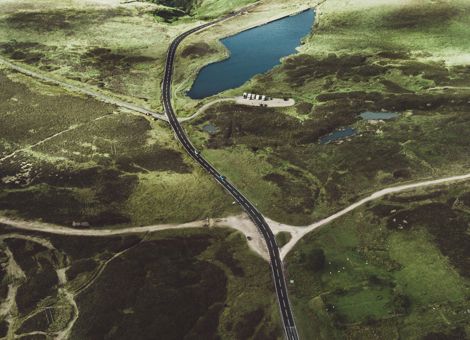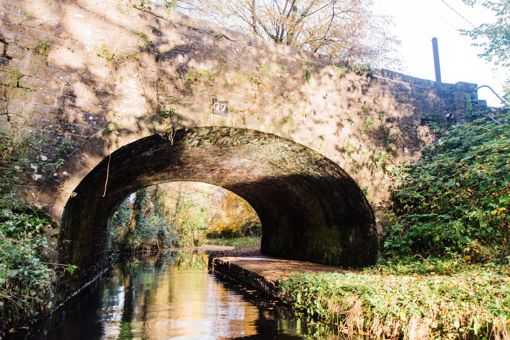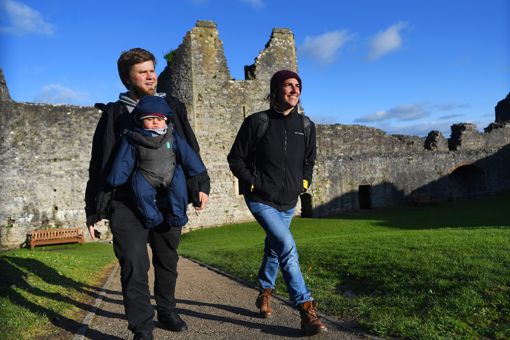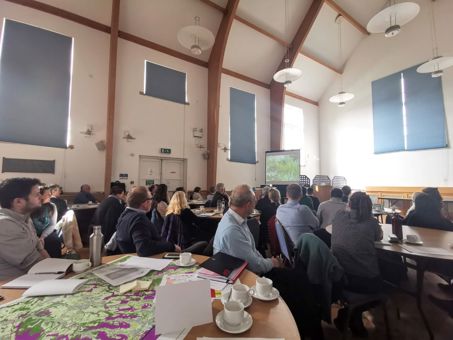Linking Our Landscapes
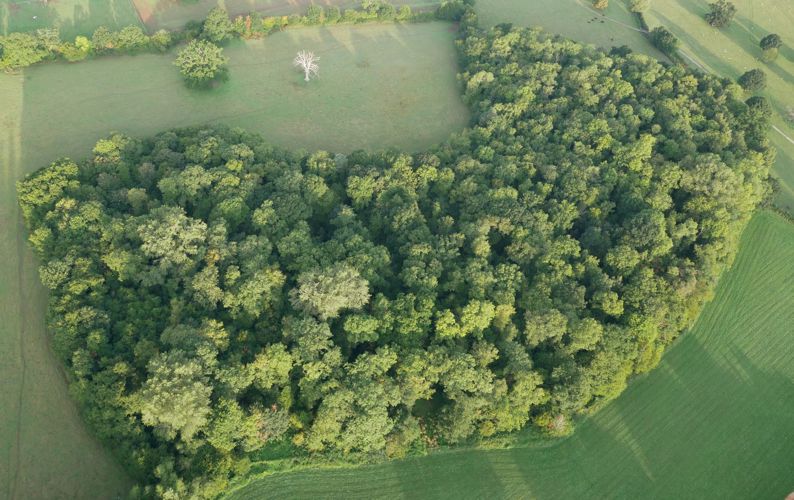
Image by Fen Turner
Why this theme?
Ecosystems are becoming less resilient and less able to adapt to challenges such as climate change. This means they are less able to provide the benefits that contribute towards maintaining health and well-being. The natural environment must be managed sustainably and recognised for the benefits it provides in the face of increasing urbanisation, development pressures, constrained public resources and changing demographics.
The 'Linking Our Landscapes' themed network has explored two significant and interconnected strands of work: reversing the decline in biodiversity by developing ecological networks, and considering how and where our natural assets can be used to deliver preventative, cost-effective and long-term nature-based solutions to some of our most complex social, economic and cultural well-being needs.
Through working in an integrated way to better understand these two significant areas of work and through the meaningful involvement of wider stakeholders, the 'Linking Our Landscapes' themed network has identified key risks to ecosystem resilience. Ecosystem resilience relates to diversity, condition, extent and connectivity, all of which combine and contribute in various ways to the overall health and adaptability of any particular ecosystem (its resilience). The key risks to the health of our ecosystems have been identified as climate change, habitat loss and degradation, excessive nutrient load and other forms of pollution, Invasive Non-Native Species (INNS), over exploitation and unsustainable use.
What would success look like?
Nature-based Solutions (NBS) are defined by IUCN as
“actions to protect, sustainably manage, and restore natural or modified ecosystems, that address societal challenges effectively and adaptively, simultaneously providing human well-being and biodiversity benefits”
| What success looks like | The vision for South East |
|---|---|
|
Natural resources are not continuously declining and are not being used faster than they can be replenished |
Our water is clean, our soils are healthy, our air is fresh and our landscapes are living. Nature is valued and biodiversity enhancements are embedded in decision-making. Our habitats and species are thriving, biodiversity is maximised and wildlife is abundant |
|
The health and resilience of our ecosystems across the four attributes of ecosystem resilience is not being compromised and where there is a need, is being enhanced |
Our ecosystems are resilient to change and threat. Partners work collaboratively to address the five drivers of biodiversity loss at the regional scale (habitat loss and degradation, climate change, excessive nutrient load and other forms of pollution, Invasive Non-Native Species (INNS) and over-exploitation and unsustainable use) by identifying the root cause of issues and taking collaborative, preventative approaches towards reducing their impact on species, habitats and people. Nature based solutions are effectively and efficiently reducing the pressure on our assets and services (e.g. grey infrastructure such as sewerage network, flood risk assets and emergency services) |
|
Natural resources are being used efficiently and the supply of different ecosystem services is being optimised for well-being |
The natural environment provides employment which sustains communities across Gwent. Employment in the farming, forestry, fisheries, tourism and recreation industries is thriving and sustainable |
|
The benefits derived from natural resources are being fairly and equitably distributed and the contribution they make to well-being is meeting our basic needs and is not declining now or in the long term |
A resilient Wales: The wildlife, habitats, landscapes and seascapes of Gwent are a source of inspiration and enjoyment for people who live and work here. They are healthy and thriving, providing essential natural benefits to the residents and visitors to the region |
What are the next steps/actions?
 Image by Rob Bacon
Image by Rob Bacon
Improved resilience of our ecosystems across Gwent
- Safeguard and enhance our ‘best sites’ (internationally, nationally and locally identified designations) and core habitat networks as identified by habitat layers on Lle website
- Refer to landscape profiles when undertaking action to improve the resilience of upland and heathland ecosystems (key spatial opportunities: Eastern Valleys and Brecon Beacons National Park)
- Refer to landscape profiles when undertaking action to improve the resilience of woodland ecosystem outside of designated sites
- Refer to landscape profiles when undertaking action to improve the resilience of semi-natural grassland ecosystems outside of designated sites (key spatial opportunities: Eastern Valleys, Gwent Levels, Central Monmouthshire and Wye Valley)
- Refer to landscape profiles when undertaking action to improve the resilience of coastal and marine habitats (key spatial opportunities: Gwent Levels)
- Improve the permeability of the urban environment through effective allocation of green infrastructure including use of Sustainable Urban Drainage Systems (SUDS) and urban tree planting
- Identify and resolve misconnections at source on public sector, third sector and privately owned/managed estate (including Housing Associations) with a focus on preventing pollution of freshwater habitats, including the identification of opportunities to implement Sustainable Urban Drainage Systems (SUDS)
- Recognise Sites of Importance for Nature Conservation (SINCs) and Section 7 listed habitats and species appropriately in the planning process and afford those identified the protection they require to avoid loss of biodiversity and ecosystem resilience
- Develop effective collaborative, preventative interventions to reduce the impact of factors threatening the resilience of our key habitats and species including climate change, habitat loss and degradation, excessive nutrient load and other forms of pollution, Invasive Non-Native Species (INNS) and over exploitation and unsustainable use
- Work with land owners and managers to identify where land could be managed differently to enhance biodiversity and the health of our core habitat networks
- Incentivise sustainable land management, working with national contacts including Welsh Government to ensure that future national schemes such as Brand Wales and replacement Common Agricultural Policy (CAP) incentivise place-based opportunities for the enhancement of ecological networks and the delivery of nature-based solutions
- Explore the implementation of ‘cut and collect’ schemes regionally to exploit economies of scale by joining up equipment, collection and disposal resources
- Pilot an approach in Central Monmouthshire to mapping the supply chain from field to fork, working with food producers, processors of food and consumer groups. Identify interventions which could incentivise local supply chains and sustainable food production
- Reduce pressure on uplands from anti-social behaviour and illegal off-road use, working with communities and partner organisations
- Use new technology to update phase 1 habitat survey particularly around "condition" of habitat
Increased understanding of the need to safeguard and enhance core habitat networks and support ecological connectivity on and between our ‘best sites’ across Gwent
- Develop a themed network of practitioners, researchers, key stakeholders and relevant agencies (and, where applicable, communities) to develop a shared understanding of how and where we can improve the health of our natural assets to maximise the well-being benefits they provide
- Explore methods of involving communities and/or sectors who will be most affected by future change in the region in developing their own vision for improving the health of natural assets to maximise the well-being benefits they provide
- Enable opportunities for citizens to challenge and scrutinise progress on actions
- Provide the necessary level of commitment, ambition and leadership required to drive action on how and where we can improve the health of natural assets to maximise the well-being benefits they provide
- Work together to identify plans, strategies and approaches to service delivery which need to change in order to drive and embed the safeguarding and enhancement of core habitat networks
- Work together to develop, populate and use common data sets which will enable organisations to baseline evidence relating to the resilience of our ecosystems
- Work together to develop consistent monitoring and evaluation frameworks which measure the changes to policy and practice regarding how and where we can improve the health of our natural assets to maximise the well-being benefits they provide
- Develop a common methodology for identifying opportunities and assessing where management of the public sector estate can improve the health of our ecosystems and the core habitat networks which support them
- Develop a common methodology for identifying how better collective public sector procurement practices can improve the health of our ecological networks and the well-being benefits they provide. This includes incentivising sustainable land management, taking learning from the Department of Environment Food and Rural Affairs (DEFRA) balance scorecard for public sector procurement
- Develop a methodology for all site-specific management plans to consider what the long-term impacts of climate change (as identified by climate prediction modelling following the high emissions scenario) will be on the habitats they manage; adapt plans accordingly
- Develop a common language to improve shared understanding of green infrastructure

Increased capacity of organisations and individuals, ensuring that they have the tools, skills and guidance necessary to safeguard and enhance our core habitat networks across Gwent
- Work together to develop a toolkit and consolidate best practice, advice and guidance which identifies land management techniques that enhance the ecosystem resilience of our key broad habitats and share across the public, third and private sectors as appropriate
- Develop and deliver skills training for biodiversity and sustainable land management across the public, third and private sector where appropriate
- Work together to identify funding streams which can enable place-based delivery of outputs that improve the health of our natural areas and the benefits they provide
- Work together to develop a Nature Recovery Action Plan (NRAP) following the publication of the Gwent State of Nature Report. This plan will identify collective interventions which will address drivers of biodiversity loss across the region and be used to:
- Ensure that identified interventions are well co-ordinated between agencies and that strong governance and accountability pathways are in place
- Ensure agreed common methodologies are socially just and account for the additional needs of disadvantaged and vulnerable communities
- Identify where and how regional collaboration can enhance ecosystem resilience
- Contribute to the development of a common evidence base for ecosystem resilience
- Identify mechanisms for effective partnership working arrangements at a larger scale where required
- Inform public sector asset management, procurement and financial planning practices
- Ensure that identified interventions are well co-ordinated between agencies and that strong governance and accountability pathways are in place
- Work with third sector organisations, with interest and experience in land management for nature to develop a scheme whereby they are resourced to advise on land management decisions from within communities, including identifying opportunities to develop core habitat networks and deliver multiple benefits, focusing initially on publicly managed land at the local scale with community and town councils
Who have we worked with to date?
For the 'Linking our Landscapes' theme, we began by looking at Gwent as a collection of distinctive and interconnected geographical landscapes. This approach was developed collaboratively with key stakeholders who have significant experience of looking at the region in this way.
Landscape panels were formed of spatial and technical specialists in each landscape area who worked collaboratively to look at eight ecosystems (UK broad habitats), as defined by the National Ecosystem Assessment and used in the State of Natural Resources Report. This approach provided us with a framework for looking at all the natural resource information for an ecosystem or broad habitat as a cohesive whole.
The landscape panel approach drew on the technical and spatial expertise of existing partnerships in South East including; the Gwent Green Grid Partnership, the Resilient Greater Gwent Partnership (through the State of Nature and Nature Recovery Action Plan for Gwent), the Living Levels Partnership, the South East Wales Resilient Uplands Partnership and Wye Valley AONB Partnership.
Each of the panels worked together to produce a set of landscape profiles, the purpose of which was to consider the resilience of the broad habitats in South East and how they interact at a landscape scale. The landscape profiles “describe the natural resources in the area” and should be referred to and read in conjunction with this Area Statement.
The landscape profiles were invaluable in forming the basis for further discussions under 'Linking Our Landscapes', 'Climate Ready Gwent' and 'Healthy Active Connected', in which a consensus for collaborative action was reached.
How do we think the areas of work we’ve proposed will help deliver SMNR?
The outcomes under each of the four strategic themes will deliver the Area Statement vision for South East. While each theme has its own vision for South East, each is part of the same overarching approach to delivering the Sustainable Management of Natural Resources (SMNR) in place.
The South East Area Statement is representative of more collaborative, integrated and involved ways of working. It is a representation of the work we have done in Gwent over the past two years to strengthen the ways we work together differently within our own organisations and as partners.
In South East, we set out to produce an Area Statement which informs internal and external planning at the appropriate scale and helps stakeholders to consider ways of working together differently when doing so. The Area Statement process is adaptive and will help to explore and shape aspirational ways of working.
Themed networks will continue to focus on working together differently to build ecosystem resilience. Each network will work together to develop a common evidence base as well as facilitate preventative interventions over the longer term.
How can people get involved?
If you would like to get involved in the delivery of the actions listed here, contribute to the developing themed network, or share your own images and stories of how you have been able to make better places for nature please contact us.
Maps of the area
Please note that our maps are not accessible for people using screen readers and other assistive technology. If you need this information in an accessible format, please contact us.

Broad habitats - South East Wales (PDF)
- Enclosed farmland
- Marine
- Mountains, moorland and heath
- Open water, wetlands and floodplains
- Semi-natural grassland
- Urban
- Woodlands
Statutory Designations - South East Wales (PDF)
- Local Nature Reserves
- National Nature Reserves
- Sites of Special Scientific Interest
- Wetlands of International Importance
- Special Protection Areas
- Special Areas of Conservation
- National Park
Give us your feedback

